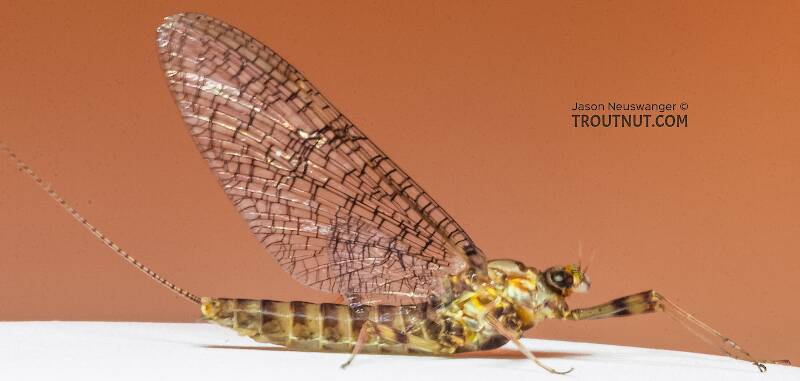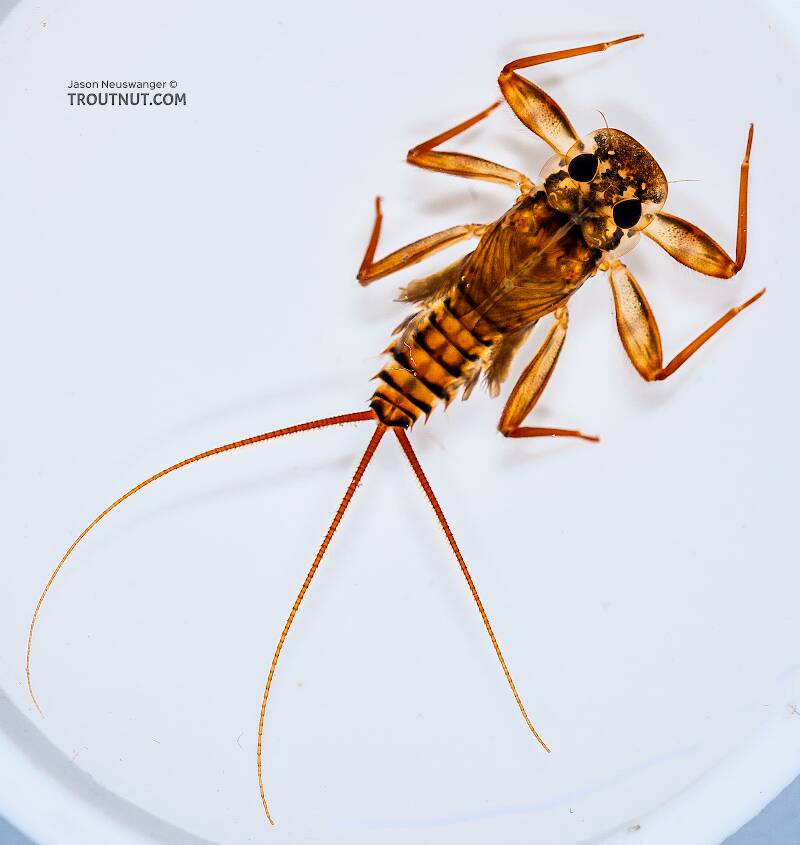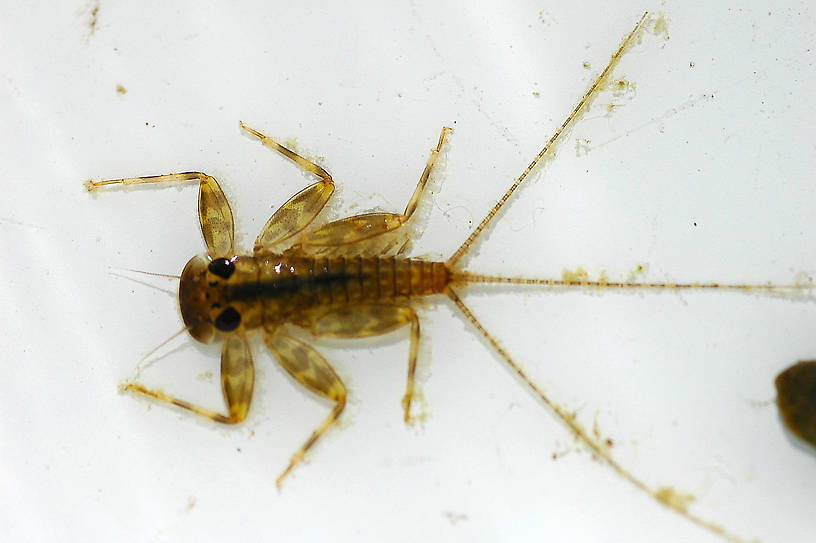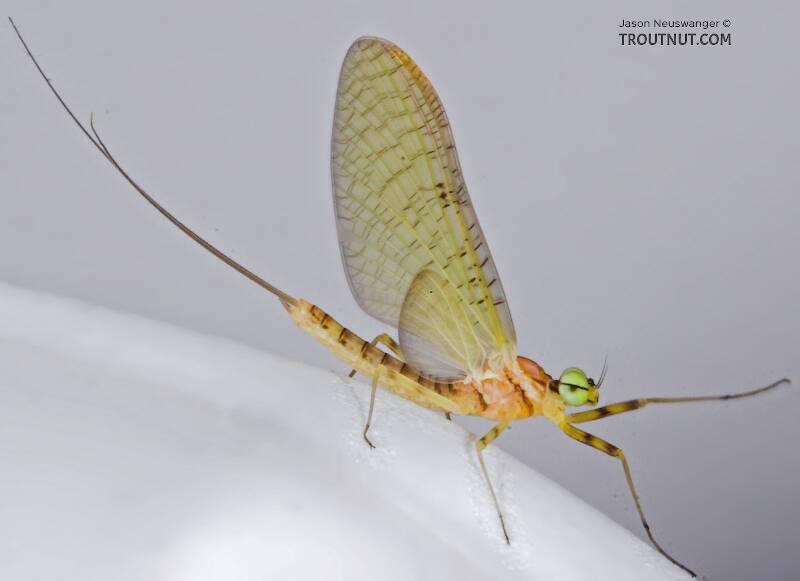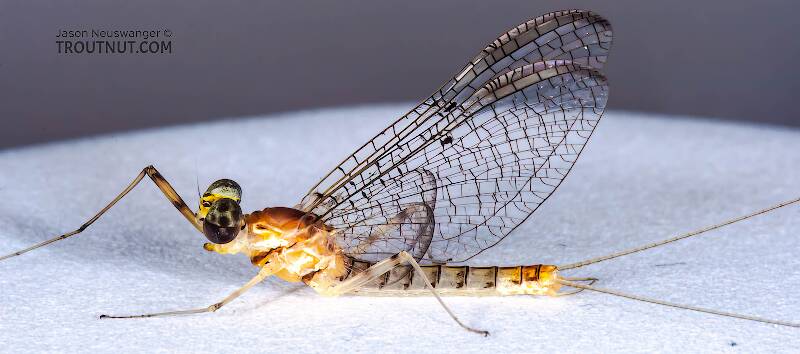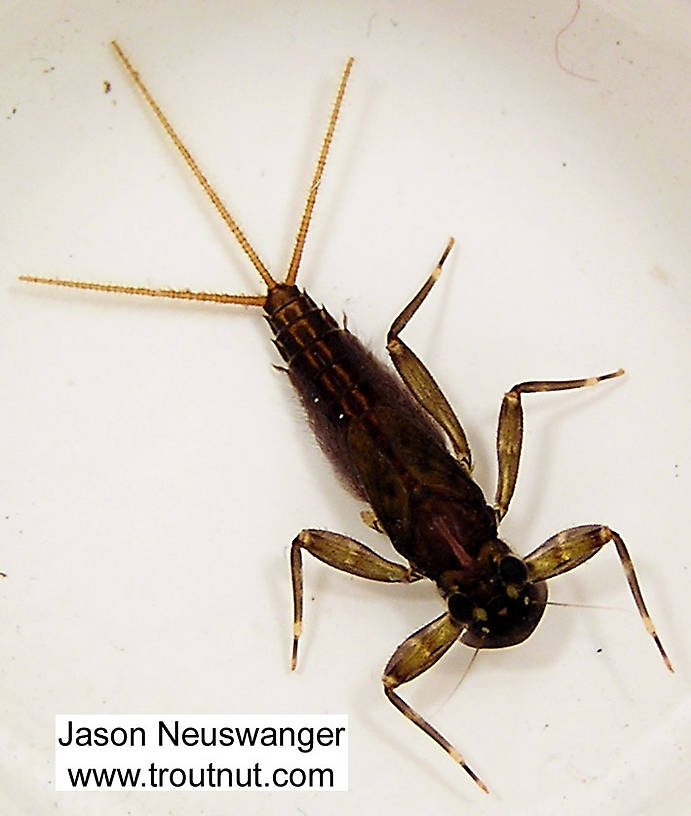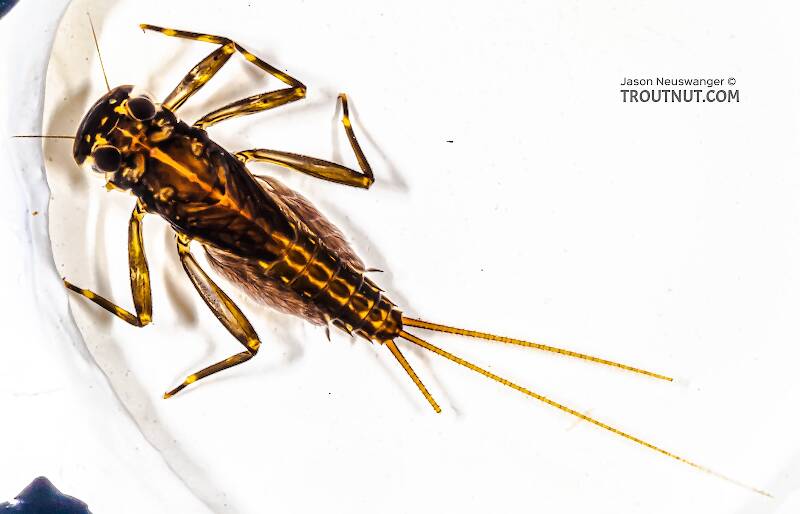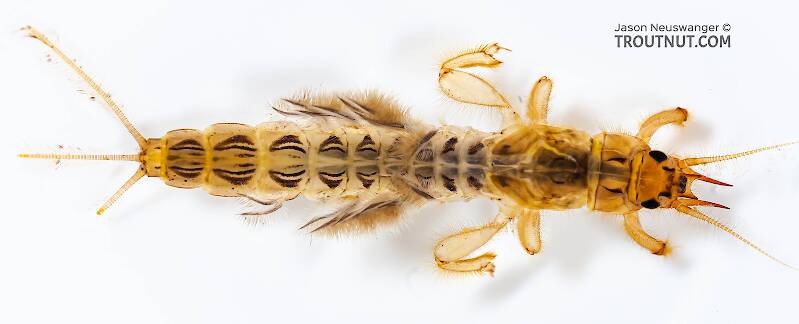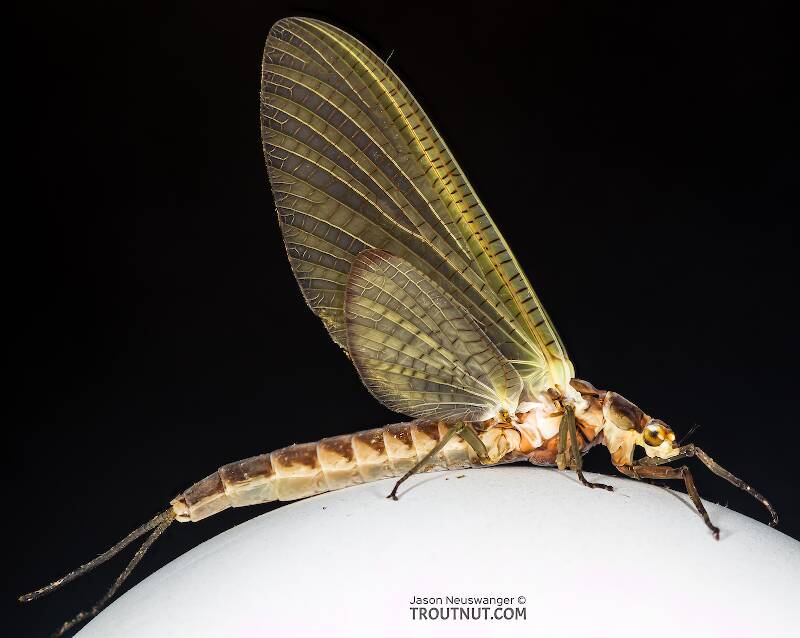
Hex Mayflies
Hexagenia limbata
The famous nocturnal Hex hatch of the Midwest (and a few other lucky locations) stirs to the surface mythically large brown trout that only touch streamers for the rest of the year.
Featured on the forum
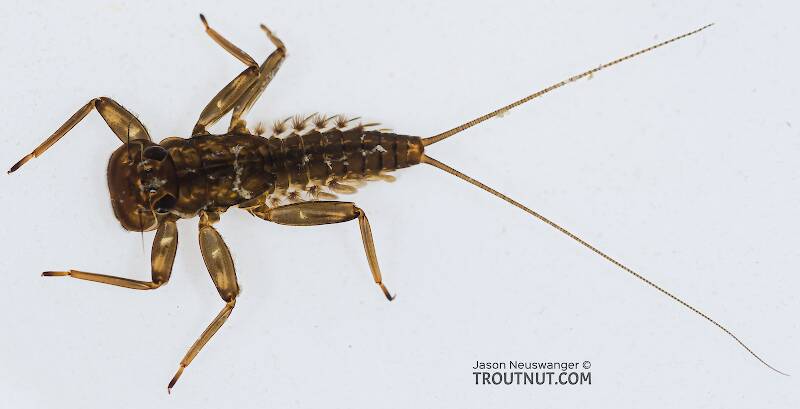
This specimen keys to the Epeorus albertae group of species. Of the five species in that group, the two known in Washington state are Epeorus albertae and Epeorus dulciana. Of the two, albertae has been collected in vastly more locations in Washington than dulciana, suggesting it is far more common. On that basis alone I'm tentatively putting this nymph in albertae, with the large caveat that there's no real information to rule out dulciana.
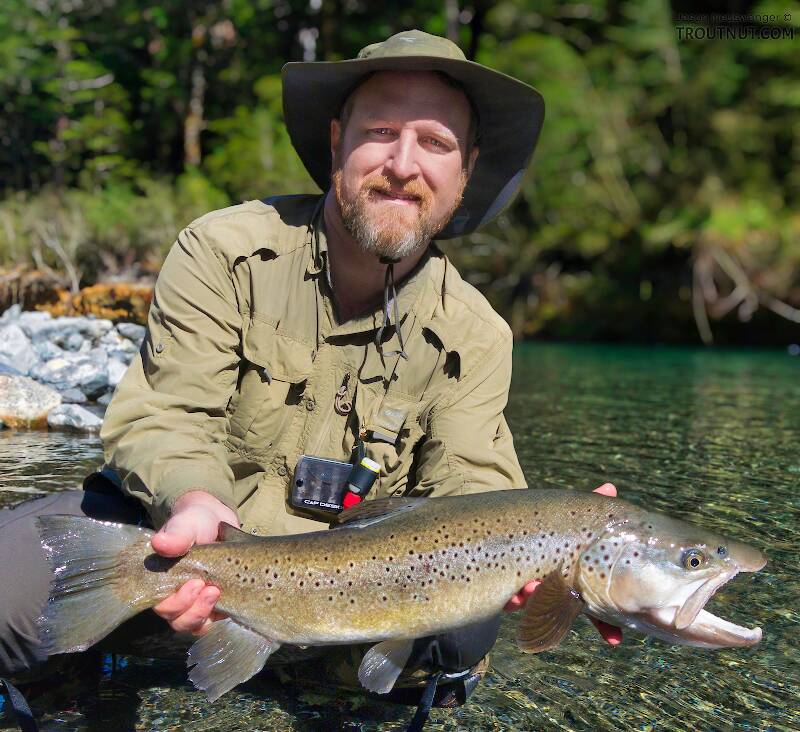
Troutnut is a project started in 2003 by salmonid ecologist Jason "Troutnut" Neuswanger to help anglers and
fly tyers unabashedly embrace the entomological side of the sport. Learn more about Troutnut or
support the project for an enhanced experience here.
Gray Foxes
Like most common names,"Gray Fox" can refer to more than one taxon. They're previewed below, along with 13 specimens. For more detail click through to the scientific names.
Mayfly Species Stenonema vicarium
These are often called Gray Foxes.
In the East and Midwest this is one of the most important hatches of the Spring. They are large flies which emerge sporadically, making for long days of good fishing.
This species contains the two classic Eastern hatches formerly known as Stenonema vicarium and Stenonema fuscum, the "March Brown" and "Gray Fox." Entomologists have discovered that these mayflies belong to the same species, but they still display differences in appearance which the trout notice easily. Anglers should be prepared to imitate both types.
This species contains the two classic Eastern hatches formerly known as Stenonema vicarium and Stenonema fuscum, the "March Brown" and "Gray Fox." Entomologists have discovered that these mayflies belong to the same species, but they still display differences in appearance which the trout notice easily. Anglers should be prepared to imitate both types.
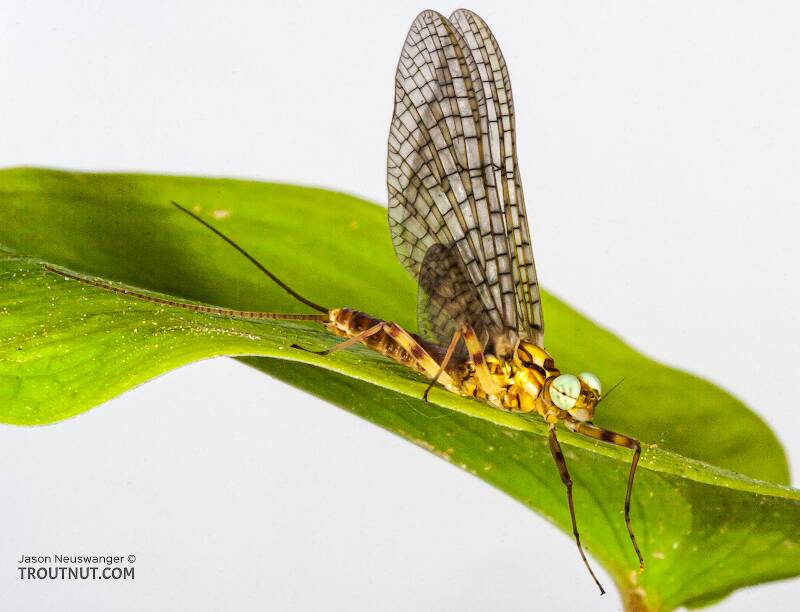
I collected this mayfly on the same trip as a female of the same species. After these photos it molted into a spinner. This is the form of Stenonema vicarium which anglers call the "Gray Fox."
See 17 more specimens...
Mayfly Species Heptagenia solitaria
These are sometimes called Gray Foxes.
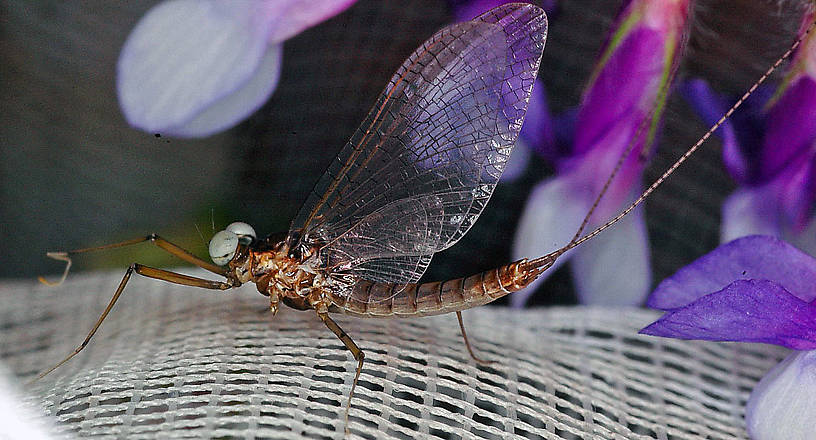
This species is common in the Flathead River below Kerr Day. The river here is fairly warm with a cobble and boulder bottom with heavy periphyton at times. This species is not common elsewhere in western Montana.
See 1 more specimen...
Mayfly Genus Stenacron
These are very rarely called Gray Foxes.
The species in this genus were formerly classified in Stenonema. See the genus Maccaffertium for details. Only one species, Stenacron interpunctatum, is important to fly fishermen. See its page for details.
See 5 more specimens...
Mayfly Species Stenacron interpunctatum
These are very rarely called Gray Foxes.
This is the best of the sporadic summer hatches known to anglers as Light Cahills. It was formerly known as Stenonema canadense and is considered by most angling historians as the model for that classic Catskill pattern.

This is a fairly small late-season female Stenacron dun.
Mayfly Species Ephemera varia
These are very rarely called Gray Foxes.
This is an excellent hatch of a different character than its Ephemera brethren. Rather than emerging in a flurry of activity within a week, the Ephemera varia hatch may last for more than a month in a single place.
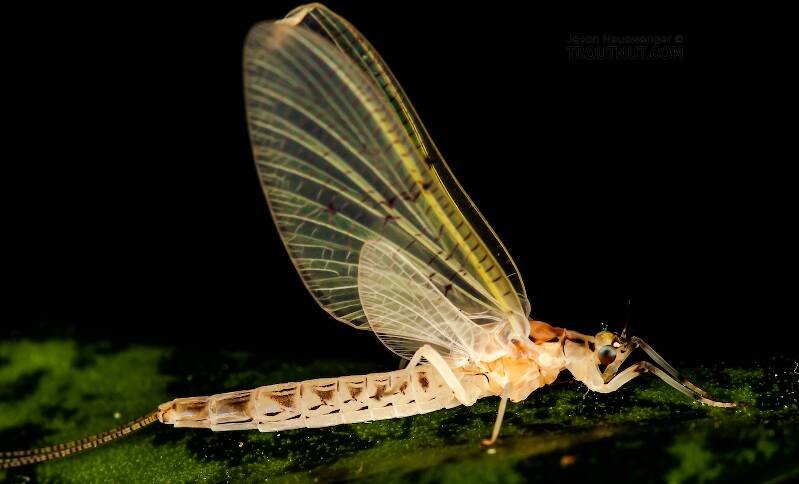
This yellow drake dun hatched out of my aquarium over a month before her brethren in the wild are slated to emerge. She seems a bit small, and that might be the reason.

I found this female spinner ovipositing in a small stream. She came along while I was playing a trout -- every good bug seemed to do that last night! I didn't have my bug net, so I caught the trout in my landing net, released the trout, and caught the mayfly in my landing net. Her wing got a bit messed up from that.


